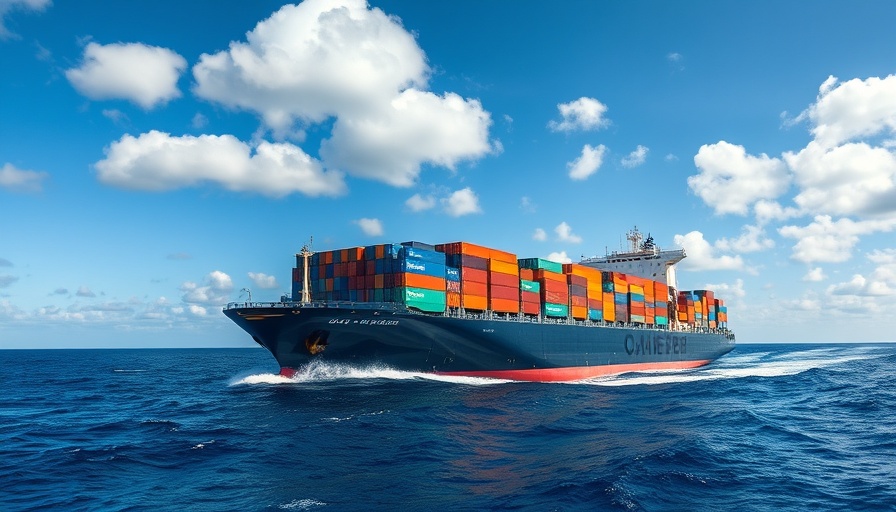
Revolutionizing Container Payments: Hapag-Lloyd's Innovative Portal
The shipping landscape is rapidly evolving, and leading the charge is Hapag-Lloyd with its new Container Payment Portal (CPP), developed in collaboration with PayCargo and Gnosis Freight. This innovative platform seeks to streamline payment processes while enhancing visibility for customers managing container shipments across the U.S.
Enhancing Real-time Traffic in Logistics
The CPP not only promises to accelerate cargo movement but also provides real-time updates on container status. This feature is crucial for logistics managers and business travelers who rely on accurate shipping information to coordinate their plans efficiently. By removing the bottlenecks often experienced in traditional dealings, Hapag-Lloyd aims to improve overall trade route operations, addressing challenges that can arise in busy ports.
Streamlined Compliance: Navigating New Regulations
Compliance with updated regulations, like the Ocean Shipping Reform Act of 2022 (OSRA), can be daunting. Fortunately, this portal simplifies the process by automating invoicing compliant with OSRA, allowing users to focus on their core logistics functions rather than regulatory hurdles. The convenience offered here will be particularly beneficial for companies dealing with multiple import channels, providing a more efficient workflow and preventing costly delays.
The Future of Shipping: Trends and Innovations
As the CPP rolls out in major U.S. ports through 2025, the integration of advanced payment processing with container tracking is a significant indicator of embracing digitalization within the shipping sector. The ability for businesses to manage payments, disputes, and tracking from a single platform speaks to the future of logistics, where agility and efficiency define success. With a digital-first approach, we can expect enhanced communication and collaboration among all stakeholders in the supply chain.
Actionable Insights for Logistics Professionals
For logistics managers, leveraging this portal could mean improved relationships with stakeholders and enhanced operational efficiency. Regularly monitoring container status updates and making use of the electronic payment features can help drive down costs associated with surprise fees and delays, thus optimizing the overall supply chain experience.
In conclusion, businesses in the logistics sector must adapt to these innovations to remain competitive. With features that provide immediate feedback and operational insights, the Container Payment Portal is a step towards a more integrated and efficient shipping environment.
Stay updated on how this evolution in container payments can impact your operations in the logistics industry. It’s time to embrace the change!
 Add Row
Add Row  Add
Add 




Write A Comment